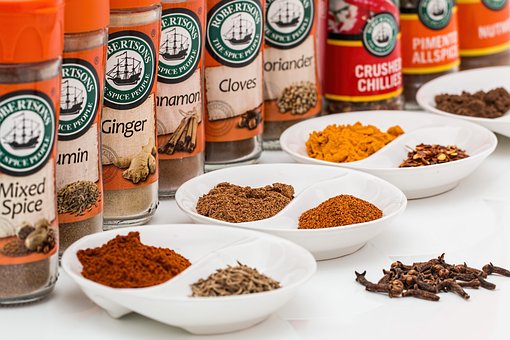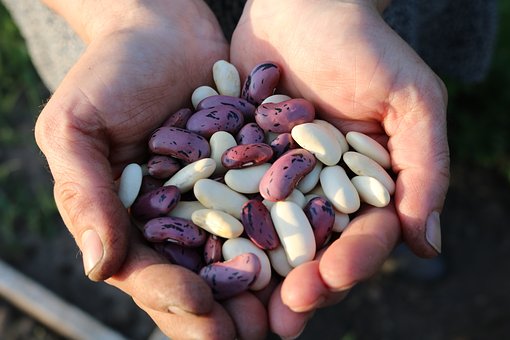9 Foods That May Help Heal Fissures
Anal fissures are a prevalent problem; nevertheless, they are not often a serious condition. Constipation is a condition that can affect people of all ages and stages of life, but it is most frequent in newborns and young children, which may be why these age groups are more likely to be affected by the condition.
A fissure in the lining of the anus, also known as an anal fissure, is a minor tear that can cause discomfort and sometimes bleeding during bowel movements.
The majority of the time, fissures are brought on by the passage of dry, hard stools. Constipation, straining, and inflammatory bowel illness are three more prevalent causes of diverticulitis. HIV, anal cancer, and tumors are all possible causes of anal fissures, but they are extremely uncommon.
In most cases, the healing of anal fissures takes between four and six weeks. Although no food can heal fissures, making changes to your diet and lifestyle can help lessen the pain and consequences associated with fissures.
If you suffer from fissures, the following nine foods could be of use to you.
1. Papaya
Papayas have enzymes in them, which may assist digestion if eaten regularly.
Caricol is a dietary supplement created with papayas, and research has shown that it can help people with gastrointestinal dysfunction and digestive disorders alleviate their symptoms of constipation and bloating.
In addition to being hydrated, papayas are composed of around 88% water. Consuming an adequate amount of water can assist in preventing dry stools that are linked with dehydration.
However, because they contain a lot of fiber, papayas should not be consumed in excessive quantities. When they consume large amounts of fiber, some people experience intestinal pain. There are approximately 13 grams of fiber in one large papaya, which fulfills approximately 50 and 34 percent of the daily requirements, for women and men respectively.
2. Lemon
Vitamin C can be found in abundance in lemons. The vitamin C content of the juice extracted from one lemon accounts for 21% of an adult’s Daily Value (DV).
As an antioxidant, vitamin C is an important factor in the production of collagen as well as the general health of the skin. It has been discovered to play a role in every stage of the wound-healing process, and a lack of it can drastically slow down the recovery process.
Because it is water-soluble, vitamin C cannot be stored in the body; therefore, it is essential to consume an adequate amount of vitamin C regularly. Lemons are delicious when squeezed and added to water or tea. When this is done, proper hydration will be promoted, which will help prevent constipation and dry stools.
3. Bananas
Bananas contain a large amount of fiber, which can be beneficial in the treatment of constipation. Seventy-seven percent of patients who suffer from constipation reported higher stool frequency and a softer stool consistency after increasing the amount of fiber in their diet, according to the findings of one review.
Because it includes 3 grams of fiber, a medium-sized banana is an excellent supply of this essential nutrient. It is recommended that men consume 38 grams of fiber each day, while women should limit themselves to 25 grams.
The level of ripeness of your banana should be carefully considered. Bananas that are not quite ripe contain a higher level of amylase-resistant starch, which can make constipation that already exists worse. As the banana ripens, the amount of resistant starch in the fruit decreases.
4. Oatmeal
Oatmeal is high in soluble fiber, which is beneficial because it helps your feces retain water and prevents constipation. It’s possible that doing this will help prevent dry stools, which are a typical cause of fissures. In the end, consuming more oatmeal and other foods that are high in soluble fiber helps to keep stools soft, which makes them easier to pass.
Avenanthramides are another type of chemical found in oatmeal, and they are known for their ability to reduce inflammation. This phytochemical may help contribute to the process of repairing fissures by assisting in the fight against inflammation, which is a vital component of the healing process.
5. Turmeric
The key component in turmeric is called curcumin, and it has been known for a long time that it had medical characteristics, including the ability to reduce inflammation and function as an antioxidant. The combination of black pepper and turmeric can enhance the body’s absorption of the antioxidant curcumin.
An initial study indicates that applying turmeric directly to wounds and skin-related illnesses may be beneficial to the healing process. Regarding the topical application of turmeric as a treatment for anal fissures, additional research is required.
Suppositories made of turmeric are becoming more widespread; yet, there is a dearth of evidence to back up their use. Because using a suppository may raise the danger of subsequent anal tearing, the vast majority of medical professionals advise against its use.

6. Ghee
Ghee is an Ayurvedic medicine that is commonly used for the treatment of fissures.
However, butyrate acid can be found in ghee. The application of this fatty acid to enhance digestion is supported by early studies, and it is increasingly utilized to treat and prevent gastrointestinal problems such as diarrhea and irritable bowel syndrome (IBS)
The use of ghee as a natural laxative is supported, among other ways, by anecdotal evidence. When it comes to promoting smooth bowel movements, Ayurvedic health practitioners recommend ingesting one teaspoon of ghee mixed with either milk or water.
Even though this practice does not offer any health risks, it does increase the number of calories and saturated fat that you consume, and no research has demonstrated that it is beneficial for this aim.
7. Milk
Milk is another well-known Ayurvedic treatment for the healing of fissures. It is frequently suggested that it be taken together with ghee to alleviate constipation. How your body reacts will determine whether or not drinking milk can help repair fissures.
Conjugated linoleic acid, also known as CLA, is found in milk with higher fat content. According to the findings of several studies, taking CLA supplements could help lower inflammatory responses. Despite this, some research has shown that taking CLA supplements may lead to higher levels of inflammatory markers in the body.
Furthermore, several older research has connected consuming milk to fissures. A study that involved 60 newborns and young children found a correlation between increased milk consumption and symptoms of constipation and fissures.
In another piece of research, participants who went on a milk-free diet for four weeks reported that their fissures had healed. However, after these individuals resumed drinking milk as part of their diet, more than twenty percent of them experienced a recurrence of their fissures.
The researchers have a hypothesis that this only applies to persons who have an extreme sensitivity to the proteins in milk. It is essential to be aware that milk does not include any fiber, as a diet that is deficient in fiber is one of the primary causes of constipation.
Even if there hasn’t been a lot of research done on milk’s curative effects, it may still be useful to relax with a warm milk beverage before going to bed.
8. Foods that are high in probiotics
Curd is recommended in Ayurvedic medicine as a treatment that targets the digestive tract and encourages regular, pain-free bowel motions. It achieves these effects by acting as a laxative. The foundation of this strategy is found in its possible probiotic effects.
Milk that has been heated to a boil is combined with an acid, such as lemon juice or vinegar, to produce curd. Live bacterial cultures convert lactose into lactic acid. The probiotics, depending on the strain, may be able to assist in relieving constipation.
However, not all curds have bacterial cultures that produce the probiotic benefits necessary to assist in the improvement of digestive health and bowel motions. There is a degree of variability in the probiotic qualities of handmade curds.
Choose foods like yogurt, sauerkraut, miso, and kimchi that are high in probiotics if you want to enjoy the health advantages associated with consuming foods that are rich in probiotics.
9. Legumes
Zinc is a mineral that plays a significant part in the healing process, and legumes such as beans, chickpeas, and lentils are excellent sources of this mineral. A zinc shortage can be a significant factor in the development of tissue damage.
There is some evidence that soaking, boiling, or sprouting legumes before consuming them can enhance the amount of zinc that is absorbed. There is 11%, 14%, and 20% of the daily value in a single cup of kidney beans, chickpeas, and lentils, respectively.
In addition to containing zinc, legumes are an excellent source of fiber, which can help regulate bowel movements, soften stools, and reduce the risk of fissures. Approximately 11–16 grams of this vitamin can be obtained from consuming one cup of beans.
It has been suggested that administering zinc topically to an anal fissure can help reduce pain and speed up the healing process; however, you should discuss this with your physician before trying this at home.

